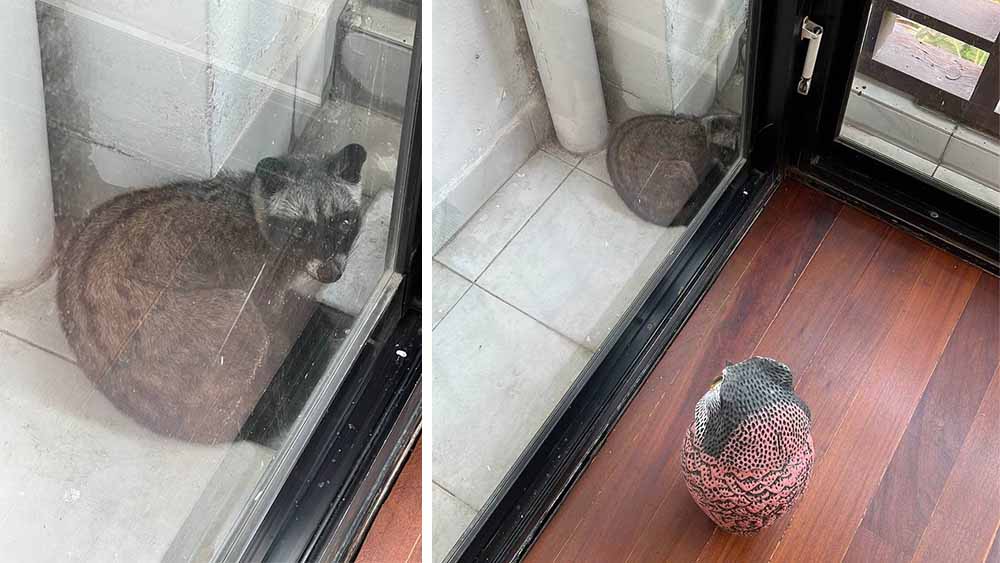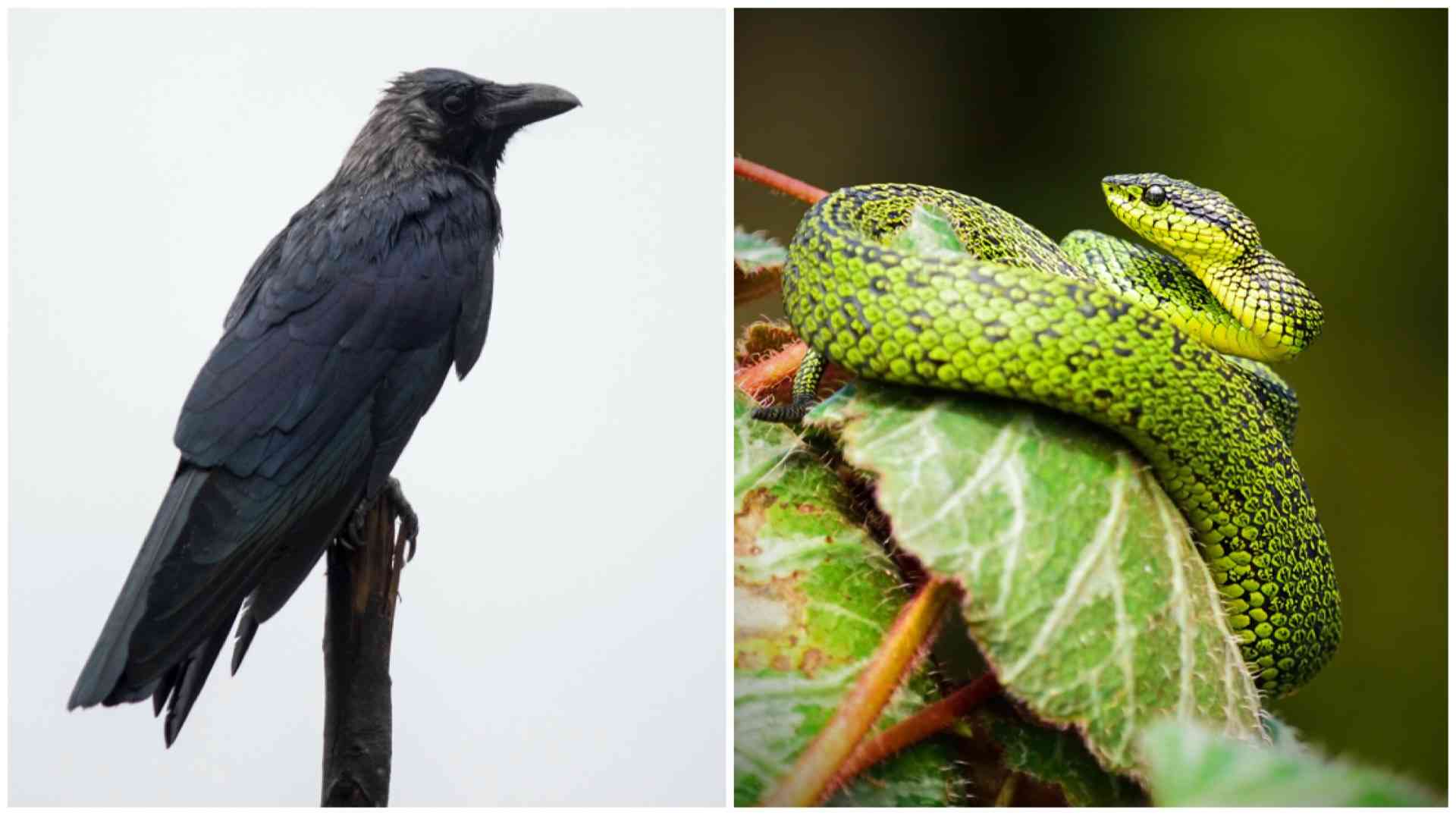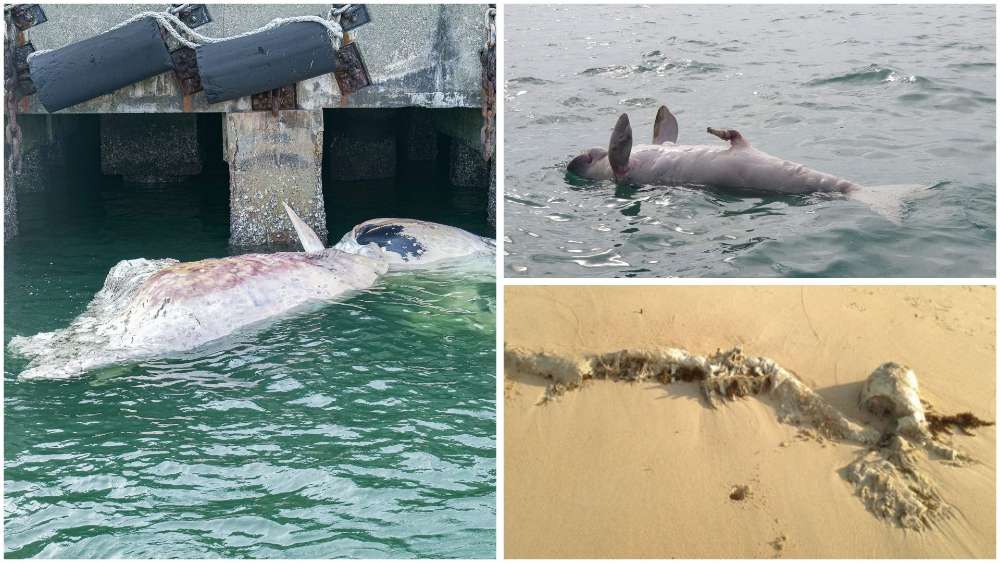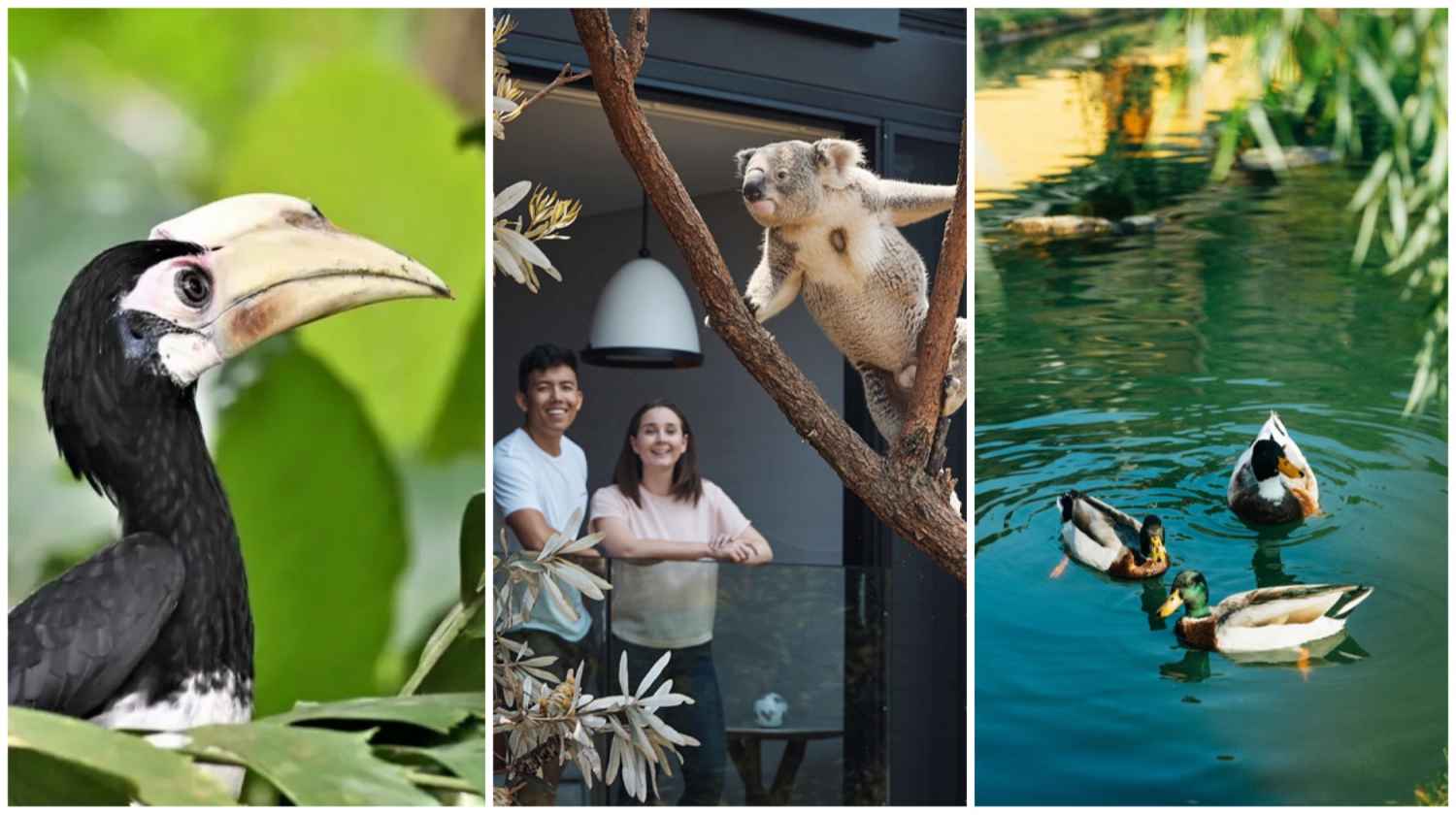If You Encounter Wild Animals In Singapore, How Ah?
Happy World Wildlife Day (3 March)! Singapore might be a concrete jungle, but it has a land area of 728.3 sqkm, which, according to National Parks, contains an estimated 23,000 to 28,000 species of terrestrial organisms.
No wonder it's so easy to cross paths with a monitor lizard at one corner, encounter a macaque at the next, or get attacked by crows. In a report by The Straits Times, Ryan Lee, NParks' wildlife management director, suggests that to address crow overpopulation issues, the public should avoid feeding birds and dispose of food scraps correctly.
But what if we were out hiking and rediscovering our own backyard or walking home from buying groceries, and found ourselves face to hairy face with a wild boar? Or if our plans to sleep in were thwarted by the "uwu" bird outside our windows?
Here's a list of do's and don'ts when you encounter certain kinds of wildlife in Singapore, for your safety, but, more importantly, for theirs.
If nothing else, just remember: see, no touch.
Asian Koels aka Uwu Birds
If we had a national bird (actually, there's an unofficial one - the crimson sunbird), this could very well be it. The old English proverb that children should be seen and not heard coud very well apply to the Asian Koel, although, truth be told, the large, midnight-blue cuckoo bird with blood-red eyes is not something you'd want to set your eyes on during Seventh Month.
This bird is a brood parasite, meaning it lays its eggs in another bird's nest - usually the house crow's - and shoves one of the host's eggs out of it to make way for its own. The blur host unknowingly raises the Asian Koel chick (which hatches first), and it's a case of survival of the fittest.
Now, what if this vocal specimen happens to roost on a tree outside your window? You can try approach your town council or condo management for assistance, but you'll most likely have to bear with the cacophony while it lasts.
Meanwhile, National Parks Board (NParks) is working with the National Environment Agency (NEA) and premise managements to prune trees, and remove crows’ nests and food sources to discourage Asian Koels from roosting in residential areas.
Just remember, uwu win some, you lose some. Just be thankful they don't come in a flock!
Bats
Firstly, the good part: bats are important pollinators for edible fruit plants such as papaya and - gasp! - durian, and they keep the insect population (which forms part of their diet) in check.
Secondly, you don't have to worry about the ones here carrying any transmittable zoonotic virus (including COVID-19), according to NParks' biosurveillance programmes. For some FAQs on bats in Singapore (like "do bats attack people?" - the answer is "no, not unless you provoke or try to handle them), click here.
If a bat is trapped in your home, injured or distressed, call the Animal Response Centre at 1800-476-1600. Let the pros help you. Please don't geh kiang and handle the bat yourself as you may make it even more kan cheong and cause it to bite you in self-defence.
Bees and wasps
Some species will sting if their hive is disturbed, so if you're thinking of smacking a nest of these stingers down with a broom, don't.
If you see a bee hive or wasp nest in a park, keep your distance or notify NParks at 1800-471-7300.
If they start attacking, here are some tips:
- Do not swat at them as that will make them even more aggressive.
- Cover your head and move away as fast as you can to the nearest shelter.
- Do not jump into water and submerge yourself. Some agitated bees may continue to attack you after you emerge.
If you do get stung, especially multiple times, seek medical attention immediately, especially before allergic reactions start to occur.
Box Jellyfish
These have highly poisonous stings, so if there are signs that clearly state "Box Jellfish Spotted Here", don't enter the water and tempt fate lah.
If you do need to scratch that sea-sport itch:
- Don't swim or do sea sports alone.
- Wear a wetsuit or something long-sleeved so you don't expose too much skin.
- Wear a life jacket or some form of floatation.
- Bring a bottle of plain vinegar along with you (this is good for flooding the stung area; otherwise, use seawater - do not use freshwater or urine).
- This seems like common sense but... avoid approaching or touching any jellyfish, whether it's in the water or it has been washed up on the beach.
Box Jellyfish stings covering more than half a limb are considered life-threatening. So if you encounter someone who has been stung by one, and is in distress or great pain, get them out of the water and call 995 immediately.
Meanwhile, remove any tentacles with a towel or tweezers, and not your hands as this could cause the tentacles to discharge more venom.
Estuarine Crocodiles
Also known as the Saltwater Crocodile, this reptile can grow to more than 5m in length. Do not be kay poh and start prodding or poking it, or even worse, feeding it. It will attack, whether in the water or on land. Just stay calm and back away.
Hawksbill Turtles
Regularly spotted along the Singapore Strait, some females have been spotted coming ashore at East Coast Park to lay eggs. Again, don't be kaypoh and disturb it.
But if you must observe this wonder of nature, do so while talking softly and not using any flash photography or shining a torchlight at it. Light and noise may frighten the turtle and it could leave without laying any eggs. Most importantly, do not touch it or its eggs.
And do not disturb any of the tracks it leaves in the sand as researchers use this to identify the species and locate its nest.
Call NParks at 1800-471-7300.
Macaques
The best way to keep macaques (or monkeys, general) at bay is: don't feed them, don't have contact with them.
Feeding monkeys will discourage them from foraging in the forest, and will spark a curiosity to search for and hang around for more food.
If there's a troop of these prying primates loitering in the vicinity of your home:
- Monkey-proof it by closing all the doors and windows (and pet entrances) or installing grilles and mesh on any openings.
- Keep food out of sight.
- Manage your garbage by double-knotting the bags or bungee cording the lid of your garbage bin shut.
- Cover up any exposed fruit on nearby trees with something opaque, or just harvest them.
If you encounter macaques in the open:
- Stop what you're doing or hide what you're eating, and back away slowly; do not turn and run.
- Do not make sudden movements.
- Do not make eye contact.
- Do not throw things at the monkey and try to hit it.
Monitor Lizards
There are a few species of this large lizard, and they can vary in length between 1m and 3m. These shy scavengers do have venom, which is used to kill small prey, but has only a mild effect on humans.
If you encounter one:
- Do not touch, provoke or corner it, as it could bite in self-defence.
- Do not attempt to remove the creature yourself. Incidentally, in Singapore, it is illegal under the Wildlife Act to remove wild animals, including monitor lizards, from the wild. Those found in nature reserves and other areas managed by NParks are also protected by the Parks and Trees Act 2005.
- Seek medical attention immediately in the rare instance you are bitten.
Otters
In recent years, we've learnt how to live with these semi-aquatic mammals that belong to the weasel family. While the natural reaction is to go "Eh!! Otter!!" and rush forward to take pictures of the bevy, don't.
If you encounter a family of otters, observe them from a distance, and:
- Do not touch or chase them.
- Do not talk loudly and do not use flash photography.
- Do not feed them.
- Do keep your dog on a tight leash. Your furkid might chase the otters and frighten them. And you don't want to witness any tragic animal-on-animal violence.
Pangolins
These shy, nocturnal and solitary mammals (also known as the Scaly Anteater) are super poor thing - not only are they endangered, they also face habitat loss due to rapid urbanisation, and often get injured or killed by vehicles.
If you encounter one, don't be alarmed - it will probably be more scared of you than you will be of it. Don't chase or corner it. Observe it from afar and be grateful for having this magical encounter with a rarely seen critter.
If you witness any poaching of these creatures, call NParks at 1800-471-7300.
Snakes
Where to ssssstart? Did you know that there are over 60 species of snakes that are native to Singapore?
The best thing to do if you encounter one in your home is to, as hard as it may seem, remain calm, keep your distance from it, but keep an eye on it and where it heads to. And call NParks at 1800-476-1600 immediately.
Even if you're not afraid of snakes, do not attempt to pick it up, especially if you can't identify the species.
If you're brave enough, take a towel and hold it out in front of you and approach the snake slowly. When you're close enough, cast the towel over the snake so that it's head is covered. This will not only calm the snake down (since it won't be able to see anything outside of the towel over its eyes), and buy you some time to clamp the towel down with some heavy objects.

Wild Boars
If you encounter one, move slowly away from it, especially if it has piglets. An adult boar with young will be in full protective-parent mode.
Keep a safe distance from it, don't feed it, and don't provoke it by wanting to take pictures of it or doing a TikTok with loud music, or worse, using flash photography.
Otherwise, it might charge at you - and show you clearly who's in charge.

IMAGE: WONDERWALL.SG
Civets
A month before moving into our marital home, my husband and I were greeted with an unexpected visitor: a Common Palm Civet. When our attempts to shoo it away with loud noises and a fake owl failed, we called ACRES and NParks. Their advice: wait for it to go away, and call them back if it doesn't. Um, okay??? What if it gets trapped on our balcony and dies, we wondered. Or worse: what if it attracts friends? In the end, ACRES and NParks were right: the civet went away on its own, leaving an aromatic "souvenir", if you know what I mean. The civet visited us so many times over the next year that we considered starting an at-home kopi luwak roastery. Jokes aside, we learnt a couple valuable things from NParks about dealing with civets, namely:
If you see one, don't chase it away - civets are shy but might attack in self-defense when feeling threatened
Keep food indoors and enclosed to prevent civets from coming into your home. Do not feed them!
If you find baby civets on your property, leave them alone - their mother will come back for them. If she doesn't after 24 hours, call the ACRES Wildlife Rescue hotline at 9783-7782.
For the latest updates on Wonderwall.sg, be sure to follow us on TikTok, Telegram, Instagram, and Facebook. If you have a story idea for us, email us at [email protected].











